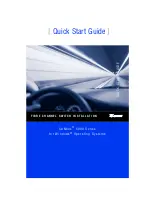
P/N 480-0005-00-15
4-13
Chapter 4: Getting Started with Command Line Interface
Example
show -o
slot. Displays all slots in system.
show -o ChannelGroup
. Displays all channel groups in the system.
Surf
The
surf
command (via < and > keys) enables you to move from one object to another through the CLI menu
tree. To use these commands, type
<
(go back to previous level) or
>
(to go forward to next level).
Previous
The
previous
command (via
ctrl-p
and
ctrl-n
commands) accesses previously entered commands. This com-
mand is available when running a telnet session only. At the prompt, enter
Ctrl-p
(forward)
or
Ctrl-n
(back).
Depending upon the terminal type you are using, the up and down arrow keys will also work.
Clear
The
clear
command clears the screen. To use this command, type
clear
at the prompt
.
Exit
The
exit
command exits you to the previous option in the menu tree; the
exit!
command enables you to exit out
of all menu items. To use these commands, type
exit or exit!
at the prompt. For the
exit
command, the last
option you exit into is the company prompt (i.e., if the company prompt is set to
Quintum
, you will be exited
to the
Quintum
prompt).
Help
The
help
system is the primary source of information for learning the configuration commands, monitoring
features, etc. The three levels of help from which you can derive information are as follows:
?.
When you type ?, brief help about the current object will be displayed.
help.
Displays detailed help on the current option will be displayed.
help (
followed by an
option name, parameter, command, or mode).
Detailed help about that object will be dis-
played.
Example
help slot.
Displays
help on a slot option.
help set.
Displays help on set command.
help conf.
Displays
help on configuration mode.
Logout
Logs out of the current session. The Telnet session will be immediately terminated.
















































